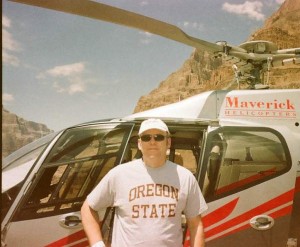Lease agreements are common. But what if your lease agreement says that you can’t do something without the consent of the lessor? Olson Brooksby deals frequently with airplane lease agreements. For example, the owner of an airplane might have certain repair facilities that it likes and the lease might contain a consent provision that requires the owner to consent to the repair facility if the plane needs repairs. This can be very frustrating for the lessee, who has to pay for the repairs. The lessee might be concerned that the lessor wants an expensive repair facility or a facility that requires transportation of the plane to a faraway place. How do conflicts over these provisions get resolved?
The following is from Kristin Olson and Scott Brooksby’s article published in the International Association of Defense Counsel’s Business Litigation, “Consent Provisions in Lease Agreements: Must the Lessor Act Reasonably?”
CONSENT PROVISIONS IN LEASE AGREEMENTS: MUST THE LESSOR ACT REASONABLY?
Experienced business litigators are generally familiar with a broad range of real estate, equipment, and other forms of lease agreements, as well as litigation stemming from such agreements. But what happens when a lease contract has a provision that requires the consent of the lessor before the lessee takes a certain action? Does the lessee have recourse against the lessor if the lessee’s consent is, for example, withheld arbitrarily?
Equipment or airplane leases provide a useful case study. Provisions in airplane lease agreements, for example, may require consent of the lessor. By way of illustration, an airplane owner (the lessor) leases an airplane to an airline (the lessee) and the lease agreement includes provisions that require that the owner consent to the choice of airplane repair facility if the airplane needs repairs. In cases where there are those types of contractual provisions, the owner might argue that the lease effectively allows it to unilaterally choose the repair facility for the airplane. Under that hypothetical lease provision, even if the airline is allowed to initially choose the facility, the owner must consent to the airline’s choice. This may have serious economic consequences for the airline, which may be concerned that the repair facility chosen by the owner is a slower repair facility than the one that the airline would have chosen, forcing the airline to incur loss of use damages. The airline may also be concerned that the repairs conducted at the facility approved by the owner will be more costly—this is particularly a concern if, under the lease, the airline is required to pay for the repairs or if the airline’s pilots or mechanics damaged the plane. The airline may also be concerned that the repair facility chosen by, or approved by, the owner is far away (a common issue with airline repair facilities)—particularly if the lease requires that the airline pay for all transport costs to the repair facility.
So what happens? Is the airline subject to the owner’s choices? In the hypothetical above, does the owner get to dictate where the airplane is repaired? The answers to those questions vary depending on jurisdiction and whether the lease explicitly requires that the lessor act reasonably, as explained in further detail below.
Does the lease explicitly require that the lessor act reasonably?
A lease may explicitly provide that the lessor’s consent “may not be unreasonably withheld.” If the lease contains this explicit provision, that is obviously helpful to the lessee. However, it still does not resolve the issue in some jurisdictions. Some jurisdictions require an examination of the facts and circumstances in order to determine whether the withholding of consent was “unreasonable” under the explicit terms of the lease.
For example, in Georgia, even if there is an explicit provision requiring that a lessor’s failure to consent be reasonable, there are common law tests of “fairness and commercial reasonableness” that must be applied to the lessor’s conduct. WPD Center, LLC v. Watershed, Inc., 765 S.E.2d 531, 534 (Ga. App. 2014). In that case, the court found that there was “a jury issue” as to whether consent was unreasonably withheld concerning a proposed sublease. Id. at 534-35.
In some jurisdictions, courts will not require a lessor to act reasonably unless the lease explicitly requires it.
In New York, if there is no explicit requirement of reasonableness in the lease, the court will not impose such a requirement on the lessor.
In General Electric Capital Corp. v. Gary, 2013 WL 390959, *1 (S.D.N.Y. 2013), the court examined a loan agreement for the purchase of an aircraft. The loan documents “specified that any assignment, lease or other transfer of any interest in or possession of the Aircraft or any of its parts required prior written approval by the lender. Notably, the agreement did not require the lender to have a reasonable basis for withholding such consent”. Id. at *4. The court explained that, under New York law, when “’a contract negotiated at arm’s length lacks specific language preventing plaintiff from unreasonably withholding consent, the Court can not and should not rewrite the contract to include such language which neither of the parties saw fit to insert in the contract.’” Id. (quoting Teachers Ins. & Annuity Assn. of Am. v. Wometco Enters., Inc., 833 F.Supp. 344, 349 (S.D.N.Y. 1994)).
In the Second Circuit case of State Street Bank & Trust Co. v. Inversiones Errazuiriz Limitada, 374 F.3d 158, 170 (2d Cir. 2004), cert. denied, 543 U.S. 1177 (2005), the court applied New York law and held that a credit agreement allowed a bank to unreasonably withhold consent on a sale of assets if the other party defaulted on its loans because it was an arms length contract that did not put explicit restrictions on the consent provisions.
Although the court in State Street acknowledged that New York law recognizes the implied covenant of good faith and fair dealing, it explained that the covenant must be consistent with the explicit terms of the contract before it is applied. Id. at 169-70. The court held that, under the terms of the agreement at issue in State Street, the bank had the right to “’withhold consent for any reason or no reason . . . .’” Id. at 170 (quoting Teachers Ins. & Annuity Assn. of Am, 833 F.Supp. at 349). The agreement did not explicitly restrict the bank’s right to refuse to consent to a sale of assets if the other party defaulted on its loans. Id. The court went on to note that, even if the implied covenant of good faith and fair dealing were hypothetically applied to these circumstances, “the bank’s refusal to consent to such a sale was neither unreasonable nor arbitrary” and was “made for a legitimate business purpose.” Id.
Under South Dakota law, the implied covenant of good faith and fair dealing is generally applied to every contract. However, as long as the parties act honestly, South Dakota courts will probably broadly enforce most contractual terms that explicitly require consent.
In Taylor Equip., Inc. v. John Deere Co., 98 F.3d 1028, 1029 (8th Cir. 1996), Midcon was John Deere’s former industrial equipment dealer. Midcon argued that John Deere breached the implied covenant of good faith and fair dealing by refusing to approve Midcon’s request to assign its dealership to a willing buyer. Id. at 1029-30. As a result, Midcon had to sell its dealership to the approved buyers for a significantly lower amount of money. Id. at 1030. The contract between Midcon and John Deere provided that Midcon could not assign its dealership to any buyer “without the prior written consent of [Deere].” Id. (internal quotation marks omitted.) The court held that the implied covenant of good faith and fair dealing “cannot override this express term of the contract”. Id.
Although “South Dakota law implies a covenant of good faith and fair dealing into every contract”, id. at 1031, the court explained that the definition of “good faith” is “’honesty in fact in the conduct or the transaction concerned.’” Id. at 1032. Additionally, under South Dakota law, the implied covenant of good faith and fair dealing “does not affect every contract term” and “cannot ‘block use of terms that actually appear in the contract.’” Id.
The court explained that, as long as John Deere acted honestly, it had “an unrestricted right to withhold approval” under the contract. Id. at 1034. The court noted that, “’[I]n commercial transactions it does not in the end promote justice to seek strained interpretations in aid of those who do not protect themselves.’” Id.
Michigan law recognizes the implied covenant of good faith and fair dealing. However, Michigan courts will generally refuse to apply the covenant of good faith or reasonableness to a contract that explicitly requires prior consent.
In James v. Whirlpool Corp., 806 F. Supp. 835, 838, 840 (E.D. Mo. 1992), the court applied Michigan law to a distributorship contract between St. Louis Appliance Parts, Inc. (SLAP), an appliance part distributor, and Whirlpool, the appliance manufacturer. SLAP argued that Whirlpool breached its covenant of good faith and fair dealing because it refused to approve the sale and proposed assignment of SLAP to Aberdeen, another distributor. Id. at 843. The court explained that, “Michigan common law recognizes an implied covenant of good faith and fair dealing that applies to the performance and enforcement of all contracts.” Id. However, the court also noted that, under Michigan law, the implied covenant of good faith and fair dealing will only limit the parties’ conduct if the covenant does not contradict an explicit provision in the contract. Id. The court held that the contract explicitly restricted SLAP from assigning its rights under the contract without Whirlpool’s prior written consent. Id. at 843-44. The contract also provided that Whirlpool could terminate the contract “for a change in management or control which it found unacceptable.” Id. at 844. The court therefore refused to apply the covenant of good faith and fair dealing because it would “override the express terms” of the contract. Id.
Under Minnesota law, prior consent requirements in contracts are generally upheld without restriction.
In In re Bellanca Aircraft Corp. v. Anderson-Greenwood Aviation Corp., 850 F.2d 1275 (1988), the court applied Minnesota law and held that Bellanca’s contracts with two companies to manufacture aircrafts were worthless assets because both contracts required the consent of the companies before Bellanca could assign the contracts to a different manufacturer. Id. at 1285. Under the contracts, “consent could be withheld for any reason whatsoever, arbitrarily or rationally.” Id. The court noted that the duty of good faith under the UCC did not prevent parties from negotiating provisions requiring consent that “may be reasonably or unreasonably withheld.” Id. Additionally, the court based its decision on the fact that that the parties did not cite to any common law supporting the idea that the UCC imposes “a duty not to withhold consent to assign unreasonably.” Id.
In Colorado, Alaska, Oregon, and Ohio, the courts generally apply the implied covenant of good faith and fair dealing, even if the contract does not explicitly state that the withholding of consent must be reasonable.
Colorado
In Larese v. Creamland Dairies, Inc., 767 F.2d 716, 717–18 (10th Cir. 1985), the court applied Colorado law and held that a franchisor may not unreasonably or arbitrarily withhold its consent to transfer rights to a franchise. The court explained that, “the franchisor must bargain for a provision expressly granting the right to withhold consent unreasonably, to insure that the franchisee is put on notice. Since, in this case, the contracts stated only that consent must be obtained, [the franchisor] did not have the right to withhold consent unreasonably.” Id. at 718.
Alaska
In Alaska, “Where the lessor’s consent is required before an assignment can be made, he may withhold his consent only where he has reasonable grounds to do so.” Hendrickson v. Freericks, 620 P.2d 205, 211 (Alaska 1980).
Oregon
In Oregon, the lessee has an objectively reasonable expectation that the lessor will consent, especially if the lessor has no objective reason to refuse its consent. See Hampton Tree Farms, Inc. v. Jewett, 892 P.2d 683, 693 (Or. 1995) (“jury could find that [seller’s] unilateral action in discontinuing to supply logs frustrated [buyer’s] objectively reasonable expectation”). Oregon courts recognize the implied covenant of good faith and fair dealing as long as it does not contradict an express contractual term. Stevens v. Foren, 959 P.2d 1008, 1012 (Or. App. 1998). In other words, the court will require reasonable conduct as long as the contract does not contain an explicit provision that allows the lessor to unreasonably withhold its consent. Oregon, what is “reasonable” generally depends on the facts and circumstances. Reasonable expectations include the right of either party to further its own legitimate business interests. U.S. Genes v. Vial, 923 P.2d 1322, 1325 (Or. App. 1996).
Ohio
In Littlejohn v. Parrish, 839 N.E.2d 49, 50 (Ohio App. 2005), the court found that there was an implied covenant of good faith and fair dealing in a mortgage note, which stated that prepayment was subject to the mortgagee’s approval, but did not explicitly include a requirement that the mortgagee act reasonably. The court noted that, under Ohio law, “there is an implied duty of good faith in almost every contract.” Id. at 53.
Best Practices
If you are assisting parties in negotiating a contract, it is best if you include explicit provisions concerning consent. If you represent the airplane owner in the introductory hypothetical, you may want to include a provision that states that consent is required and may be unreasonably withheld. If you represent the airline, you obviously want to omit any consent provisions. However, if the airplane owner requires a consent provision to do business, the airline should try to negotiate for a provision that explicitly states that consent may not be unreasonably withheld. The airline could also try to negotiate for a specific list of agreed-to repair facilities in advance.



